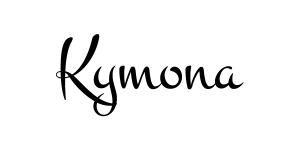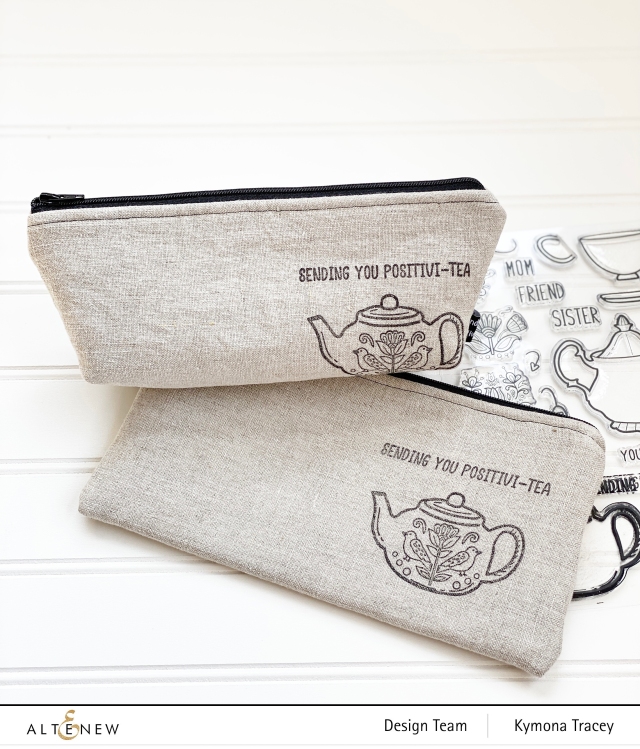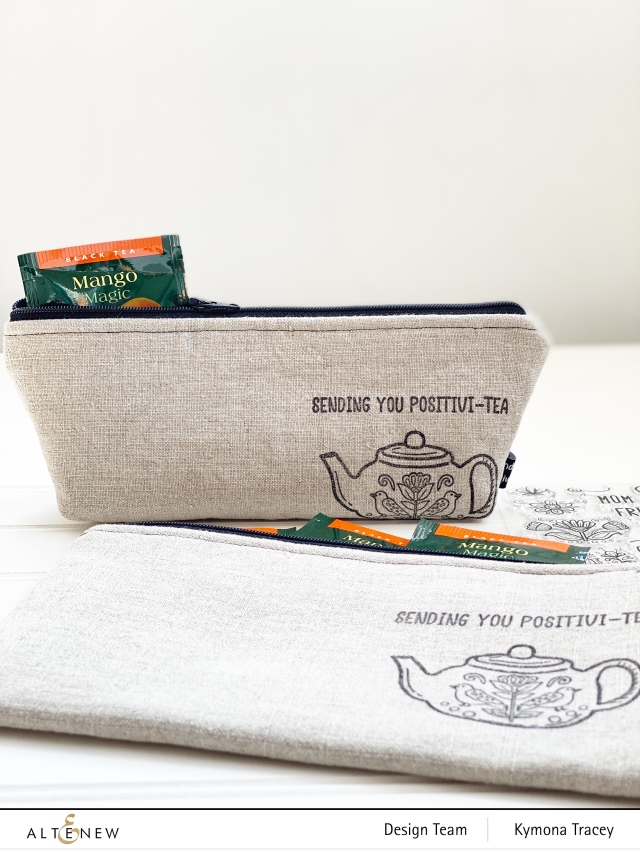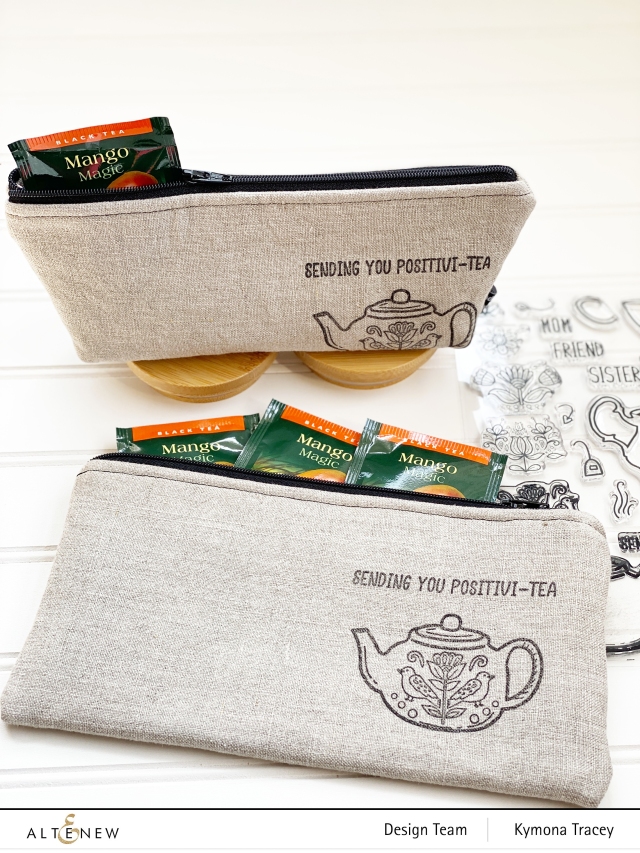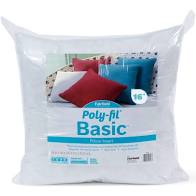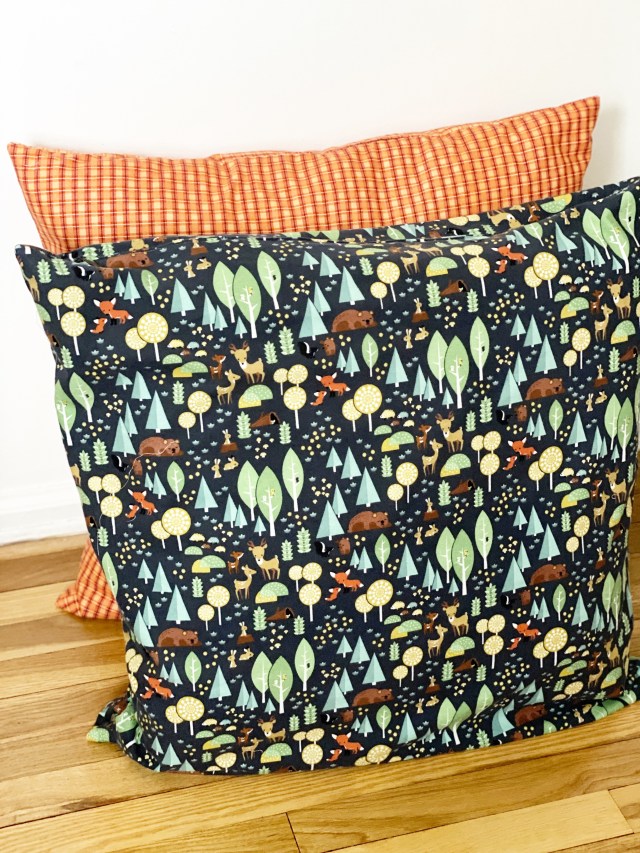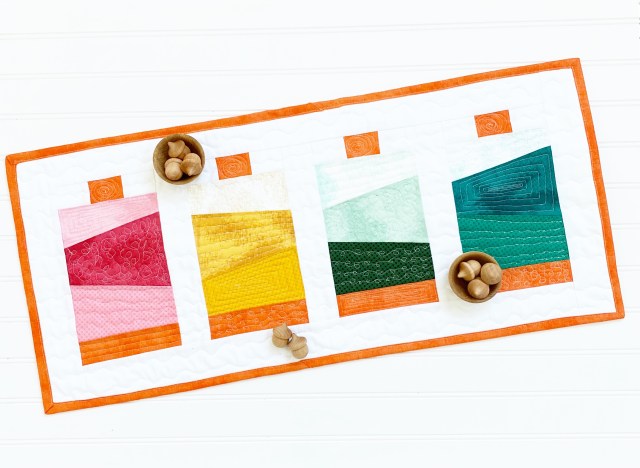Hello everyone!! I’m here today to show you how to create a cool quilted candy pouch that seems to be all the craze on my Instagram feed.
These pouches are easy to make and involves some quilting which is always fun. My daughter and nieces love when I make these for them. People think they have candy in them, but they don’t. They keep their money, phone, and whatever young ladies carry in their bookbags.
Take a look at these cute candy pouch:

Cute right? We think so over here.
Here’s how you make it:
Materials:
Your Favorite Candy Bag
Thermoweb HeatnBond Vinyl
Aurifil Thread 2024
Quilting Ruler
Cutting Mat
Rotary Cutter
Lining Fabric
Batting
Plastic Zipper
Sew Machine

Step one: Cut the candy bag
The bag’s size is determined by how much you cut off the sides, top, and bottom.
I cut very little to preserve most of the bag.
This candy bag has a sealed side that is about half an inch wide. I cut right up against that on both sides. I’m starting with the right side.


I cut the left side, but I didn’t cut far enough.

So I cut again, this time only a slither.

Now it’s open.

The top of this bag has the ziplock seal, so do the same and cut right below that.

The bottom is a bit tricky because it has a square bottom so that it could stand up. So we have to be careful how we cut this. Remember we want to save most of the bag.
Start by cutting a slither at the bottom. It will separate the front and bag of the bag.

Next, open the bottom to make sure the cut opened the bottom of the bag.

Once you see the cut, take your time and use a scissor and cut the bottom off at the corners where they met.

Like this, repeat on the three remaining sides.

Congrats, you have a front and bag panel to make your bag.

Step Two: Apply vinyl
Lay the top of the candy bag on top of the vinyl and cut the vinyl bigger than the candy bag.
I do this just to make sure the entire candy bag is covered.

Peel the paper off of the vinyl and adhere the vinyl to the front of the candy bag.

Cut the excess around the edges off. Make sure you do this before you move onto the next step. You will make a mess of your ironing board if you don’t.

This is where the magic happens!
Place the paper backing you peeled off back on top of the vinyl cover candy bag, and heat set it.
Follow the manufactures instructions.

You now have a sewable candy bag front and back!!
It’s Sewing Time!!!
Step Three: Create a Quilt Sandwich
Place the candy bag front on top of the lining fabric and cut a piece bigger than the candy bag.

Cut a piece of batting that will sandwich between the front and the lining. You want to see all three layers.
When you quilt this, the layers might shift, you want to make sure you catch all of the layers that is why we cut each layer bigger than the first. Repeat for the back of the bag.

Step Four: Quilt both pieces
Place the quilt sandwich under the presser foot lining up the right edge of the candy bag with the presser foot’s edge.
I used my patchwork foot because it’s easier for me, and that is what was attached to my machine at the time.

Once the first quilted line is down, I attached the ruler guide to equally space out the lines.
If you don’t have a ruler guide, you can use the presser foot as the guide. Just line the right edge up with the previous line to ensure accuracy.
Quilt the entire front and repeat for the back.

Excellent, now you have two quilted pieces.
We are in the home stretch now.

Step 5: Sew the bag
Trim all four edges. Repeat for the second piece.
Make sure both pieces are the same size.

Now you can measure the top of the bag to determine what size zipper you should use.
My bag measured 7 7/8 inches by 8 1/8 inches.
I used a 12-inch zipper. I didn’t have anything smaller.

I prepare my zippers by folding back the zipper tabs in the front and sewing them in place.


I unzip the zipper so that I don’t have to worry about the zipper pull.
I place the zipper face down on the top of the candy bag, lining the zipper’s edge to the edge of the bag.

After you sew the zipper in place, close the zipper. Fold the closed zipper back so that the top of the bag folds back like the picture below.

Use your hand to press the front of the backdown. You would normally iron this, but you can’t because of the vinyl.
Topstitching will keep the bag folded at the top.
Place the edge of the presser foot up against the fold and stitch straight down. You can change your stitch length but remember to change it back before you sew the other side of the bag.

Place the front of the bag, right sides together with the back of the bag.
Line the zipper edge with the edge of the back panel of the bag. Make sure the right side edge of the bag is lined up as well.

Stitch the zipper in place.

As you get closer to the zipper pull, lift the presser foot with the needle down and pull the zipper pull out of the way. Continue stitching to the end.

Fold the zipper back to create the fold on the top of the back of the bag.

Topstitch this side of the bag.

This is what your bag should look like now.

Open the zipper half-way at this point. Make sure you do not skip this step. If you do, you will sew the bag shut.
Now, fold the bag right sides together and sew from one side, around the bottom, and back up to the top—backstitch at the beginning and the end.

Step Six: Clean up and turn inside out
At this point, if your zipper extends out, cut it off.


Cut corners and trim the edges if they don’t match up.

Now turn the bag inside out.

You will have to play with the corner a bit because of the vinyl touching each other. Just take your time and ease it out.

Done!!! Now it’s your turn to make one!

Here are other bags I’ve made:



What do you think? Will you make a couple for yourself, family, and friends. Let me know.
Supplies use:









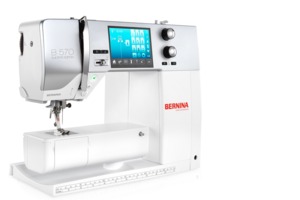


Thanks for stopping by,
